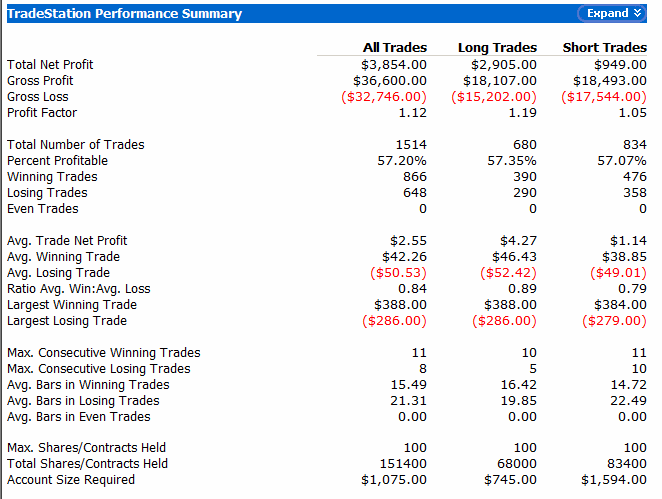 Our friend Scott Andrews, a West Point graduate and former CEO of a public company, is now Founder and President of MasterTheGap.com. Today he is going to share an interesting perspective in this article on using historical probabilities. For a limited time to Traders Blog readers, Scott is offering a complimentary historical research study on opening gaps in the S&P 500. If you enjoy this article, you may wish to download his complimentary SPY Gap Study HERE.
Our friend Scott Andrews, a West Point graduate and former CEO of a public company, is now Founder and President of MasterTheGap.com. Today he is going to share an interesting perspective in this article on using historical probabilities. For a limited time to Traders Blog readers, Scott is offering a complimentary historical research study on opening gaps in the S&P 500. If you enjoy this article, you may wish to download his complimentary SPY Gap Study HERE.
--------------------------------------------------------------------------------------------------------------------------------------------------------------
Maybe you shouldn’t try to kiss all the pretty girls?
In the timeless words of Sir Winston Churchill, “Those who fail to learn from history are doomed to repeat it."
Though Churchill was not speaking of the markets, the concept is certainly applicable. In fact, the easiest way to make money trading the markets, is to avoid those setups that have been unprofitable historically.
Many folks obsess over trying to trade every winning setup. I do not. I am a gap fader. When the historical probabilities are favorable, I will short ‘up’ gaps and buy ‘down’ gaps. Since more than 70% of all opening gaps have filled the same day historically in the U.S. indices, I do not need to catch every winner to be successful.
In fact, I’ve had my best success focusing on simply trying to avoid the majority of the losing setups. Let’s a take look a look at a real market example.
Had you hypothetically faded every trade-able opening gap since 2004 in the SPY (S&P 500 ETF), using a reasonable size stop to accommodate post-open volatility (e.g. 30% of the 5 day ATR), you would not have made much in profits:

Now let’s look at these results segmented by day of week – one of the easiest filters to incorporate into your trading plan:

As you can see, fading ‘up’ gaps in the SPY on Mondays and Wednesdays since 2004 has been a money-losing scenario.
So, what if you simply excluded fading ‘up’ gaps on these two days? Here are the historical results:

The total number of trades decreased by 23%, while the total net profits increased by 43%! This is pretty astounding when you consider the simplicity of the concept. And though these results are still not compelling and worthy of trading in my opinion, the dramatic improvement in profitability illuminates the value of avoiding the weakest setups.
A word of caution: taking this concept too far can result in ‘curve-fitting’- a risk when creating a strategy based on historical data. However, excluding historical scenarios that have occurred frequently and been significant money losers seems prudent and has worked well for me personally.
If identifying the best and worst scenarios for trading the gap in the S&P 500, or one of its component stocks is of interest to you, then help yourself to my complimentary historical research study on opening gaps in the S&P 500:
Whether you are a gap trader or swing trader this information can help you. If nothing else, it should help you avoid the urge to ‘kiss all the pretty girls!”
Here's to probabilities not possibilities,
Scott Andrews
President & Founder
Master The Gap, Inc.

try
Thanks for sharing. Good article. It is very important to find your trading edge. In order to have an even better return, never stop to improve the trading plan is critical.
It wasn’t Sin Winston Churchill who came out with that sentence but rather the Middle Age Philosopher
Thanks Jay - my own personal style has evolved to do just what you suggest. The challenge however is that this approach can go to far and eliminate losing trades based on too small of a historical sample size to be reliable.
I also track the best historical scenarios too and sometimes (like today's small gap up) the historical data is conflicted and I will reduce my position size / risk but still take the trade if the majority of the data is positive/supportive of the gap fade.
This is amazing, I wonder by the same token and a " reductio absurdum" method we should be able to eliminate most of the loosing trades and increase the probability of success, I mean winning trades. Historically falls are always steeper than rises and that study will also add to increase more profitable winning trades and reduce the number of loosing trades. Please keep posting such excellent info which worth its weight in gold!
It wasn't Sin Winston Churchill who came out with that sentence but rather the Middle Age Philosopher Santayana.